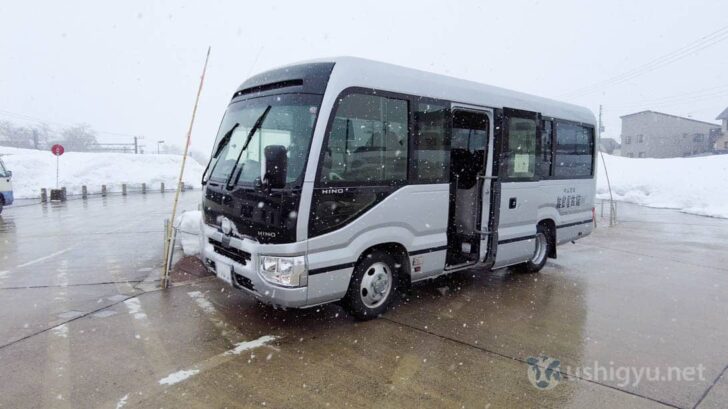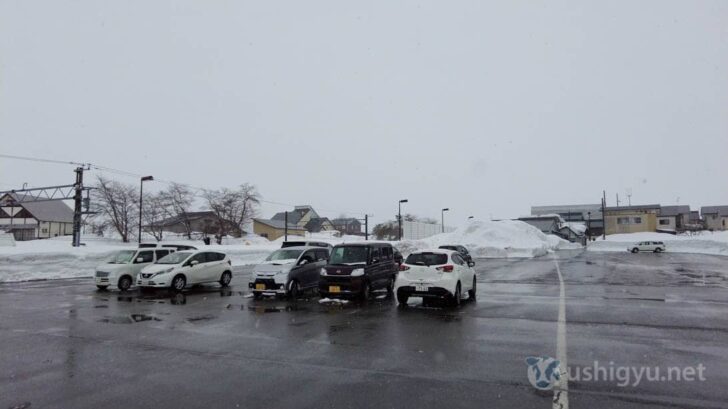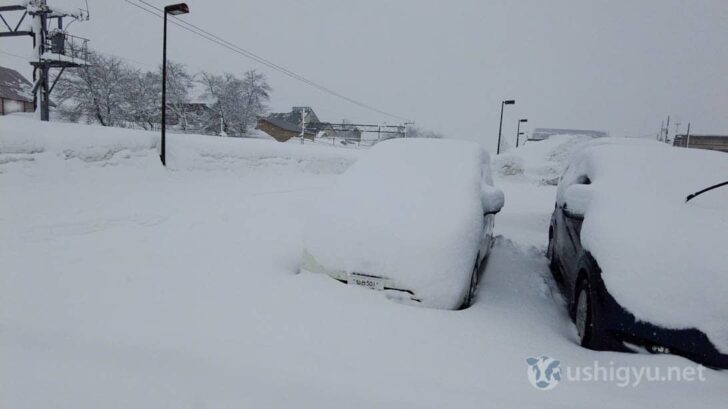One of the most beloved destinations among hot spring and travel lovers, Ginzan Onsen in Yamagata is often at the top of must-visit lists.
It’s such a popular hot spring town that it’s said most inns are fully booked up to 4 months in advance.
Because Ginzan Onsen is nestled deep in the mountains of inland Yamagata, it’s a bit tricky to access.
You’ll either need to drive or make several transfers via train and bus.
I decided I wanted to visit Ginzan Onsen, but coming from Fukuoka or even from Sendai—the main gateway to Tohoku—I had to do quite a bit of research on how to get there.
Since I couldn’t find much comprehensive information online, I’m compiling everything I learned here as a reference!
Getting There by Car or Rental Car
The most straightforward way to reach Ginzan Onsen—especially since access isn’t easy—is by driving.
If you’re coming from Tohoku or even Kanto or Chubu regions, you can probably make it directly. For those coming from farther away, renting a car in Sendai or Yamagata City is a practical option.
The advantage is that you can create your own schedule without worrying about train or bus times. It’s also great if you want to stop for sightseeing.
However, the area gets heavy snow in winter, so be very cautious if you’re not used to driving on snowy mountain roads.
You’ll also need to plan for parking. Since communal lots may be closed in winter (ironically when demand is highest), be sure to check with your inn or the tourist information center.
Here’s a rough estimate of travel times to Ginzan Onsen by car:
- From Sendai: about 2 hours
- From Yamagata City: about 1 hour 20 minutes
- From Tokyo: about 5 hours 40 minutes
- From Nagoya: about 9 hours 30 minutes
Driving Only to Ōishida Station
Initially, I considered using trains and buses, but planning around tight connections and wait times made it tricky.
At the same time, I wanted to avoid driving unfamiliar snowy roads.
So I came up with the idea of renting a car to Ōishida Station, the nearest train station, then taking the shuttle bus from there.

From Sendai to Ōishida Station, you can drive mainly on easy-to-navigate national highways—even in snow. The steeper roads between the station and Ginzan Onsen are handled by the shuttle.
Ōishida Station offers free parking, and most inns provide shuttle service—so no extra transport costs.
If you’re not staying overnight, you can also take the local bus.
In the end, I think this method was a great choice.
That said, snow can pile up incredibly fast, so caution is needed. When I arrived, the parking lot looked like this:

After just one night at Ōishida Station, my car ended up nearly buried in snow.
It only took about 20 hours. That’s how extreme the snowfall can be.

Even if I had driven all the way to Ginzan Onsen, I would’ve had the same problem. With no snow tools on hand, digging the car out was tough…
Snow left on the roof can slide forward and block your view when braking, so be sure to clear it off before driving. Also, warm up your car for a while before setting off.
One tip from the inn staff: if you force the wipers when they’re frozen, the rubber can tear. Always clear snow and ice before using them.
And ideally, you should leave your wipers raised when parking in snowy areas.
When snow is falling or expected overnight, it’s a good idea to raise your wipers. The reasons include:
・Preventing the wipers from freezing onto the windshield
・Avoiding damage from forcing frozen wipers
・Making it easier to clear snow off the windshield
Why Raise Your Wipers on Snowy Days | Zurich Japan
Example Route from Sendai to Ōishida Station
In my case, I took National Route 48 from Sendai to Higashine City in Yamagata (stopping for ramen), then followed Route 13 and Prefectural Route 189 to reach Ōishida Station.
Though snow piles up on the mountain roads along Route 48 in winter, the roads are wide and manageable if you drive cautiously.
Don’t speed, and make sure to use winter tires or chains.
Recommended Rental Car Booking Site
If you’re renting a car, I highly recommend the travel booking site Tabirai![]() —I use it almost every time.
—I use it almost every time.
Here’s why I recommend it:
- Only top rental car companies that pass strict screening are listed
- Exclusive plans not found on official sites—often at lower prices
- Rates include insurance, GPS, and ETC—all clearly displayed
Unlike sites like Rakuten, where insurance is often optional, Tabirai includes it by default.
Despite that, prices are usually cheaper than booking directly, and the site is easy to navigate.
After dozens of uses, I’ve never had a single issue. I trust it completely for domestic rentals.
By Train to Ōishida Station, Then Shuttle or Local Bus
If you don’t want to drive, you can take a train to Ōishida Station and transfer to a shuttle or local bus.
From Sendai Station, you can take the Senzan Line to Yamagata or Kitayamagata Station, then switch to the Yamagata Line to reach Ōishida Station.
The upside is you won’t need to worry about driving. You can nap or enjoy a drink en route.
The downside is that train schedules—especially the Yamagata Line—have long gaps, so plan carefully.
Also, there’s less freedom to make stops along the way.
If you’re staying overnight at Ginzan Onsen, most inns offer shuttle service—take advantage of that.
If not, local buses are available.
The fare is ¥720 one way, with only 6–7 buses per day, so be sure to check the schedule.
(Timetable here → Hanagasa Bus: Ōishida Station to Ginzan Onsen)
Highway Bus + Local or Shuttle Bus
Another option without driving is to take a highway bus from Sendai, then transfer to a local or shuttle bus.
Yamakō Bus runs highway buses from Sendai Station and downtown to a rest stop in Obanazawa near Ginzan Onsen.
It costs ¥1,780 and runs 6–10 times per day.
(Highway bus info → Shinjō–Sendai Line (No Reservations) | Yamakō Bus)
From the Obanazawa rest stop, transfer to the same local bus that runs from Ōishida Station to Ginzan Onsen. (→ Hanagasa Bus: Ōishida Station to Ginzan Onsen)
Ginzan Onsen in 4K
Since I had the chance to visit beautiful snowy Ginzan Onsen, I brought my DJI POCKET 2 to capture it in 4K.
If you’re planning a trip, or even if you can’t go anytime soon, I hope this helps you experience it virtually.
Final Thoughts
Needless to say, the winter scenery of Ginzan Onsen was breathtaking.
It’s not easy to access and requires preparation for snow and cold, but I highly recommend making the trip at least once!



Comments